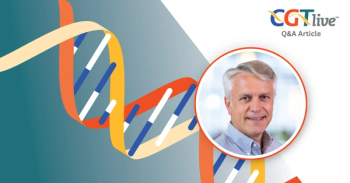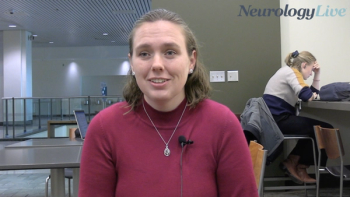
What Were the Most Significant Inflection Points or Breakthroughs in Cell and Gene Therapy?
Deborah Phippard, PhD, and Renier Brentjens, MD, PhD, discussed major events in the past quarter century of cell and gene therapy research.
The past 25 years, from 2000 to 2025, have been an unprecedented and rapid period of development of the field of cell and gene therapy. To get a perspective on how far we've come, and how far we have yet to go, CGTLive® reached out to Deborah Phippard, PhD, the chief scientific officer of Precision for Medicine, and Renier Brentjens, MD, PhD, the chair of the department of medicine and the deputy director at Roswell Park Comprehensive Cancer Center, to hold a Special Report discussion on the topic entitled: "Quarter Century Update: What’s Holding up Progress in Development? Where Have We Seen the Most?"
In this transcript of the first episode, Phippard and Brentjens introduced themselves and gave their respective views on the biggest breakthroughs or inflection points in the field's past 25 years. Phippard highlighted key moments such as the pioneering treatment of Emily Whitehead with the first chimeric antigen receptor (CAR) T-cell therapy and Brentjens emphasized the transition of CAR-T from mere idea to real-world cure for leukemia, noting the importance of industry involvement.
CGTLive: Can you introduce yourselves?
Deborah Phippard, PhD: I'm the chief scientific officer at Precision for Medicine. I've been there for the last 12 years or so, running the labs. My background is immunology, cell biology; I have a true passion for translational science and precision for medicine. We run full-service clinical studies with the lab's translational components.
Renier Brentjens, MD, PhD: I am the deputy director and chair of medicine at Roswell Park Comprehensive Cancer Center. I actually have a PhD in microbiology, and then moved over to immunology. I spent more than 2 decades at Sloan Kettering in New York City developing CAR T-cells targeted to CD19. My move to Buffalo was prompted by a desire to move this technology past blood cancers, where it's now FDA-approved, to bridging the gap to solid tumors, which is what we're developing here at Roswell.
What Were the Most Significant Inflection Points or Breakthroughs in the Field?
Deborah Phippard, PhD: When I think about the significant inflections, there's sort of 2 ways of thinking about it: constant, incremental progress, which is just so important for how we build the field—but I was thinking about this question—I mean, you have to say the first CAR-T therapy. I'm here at Meeting on the Mesa while we're taping this and Emily Whitehead, who of course was the first patient to get Kymriah—her dad, was here talking about that journey of her at age 7 getting that first CAR-T, which helped pave the way to approval. Very powerful to hear patient families talking.
But you see that in the different fields. That was the CAR-T. We've just had amazing data from uniQure with that gene therapy in Huntington disease, and just recently bluebird and Vertex had their sickle cell therapies, 2 different approaches to a very challenging disease—whether you will go with a lentiviral approach, or you would go with ex vivo gene editing—we're seeing major therapeutic breakthroughs. What would you like to add Renier?
Renier Brentjens, MD, PhD: Well, I completely agree with everything you said. I think when I came in as a fellow, the key phrase was gene therapy, and that was pie in the sky. The fact that it veered off to initially being a treatment for engineering cells to eradicate cancer was very interesting and so I agree that those first CAR-T trials were very exciting to follow in the fact that that we've cured otherwise an extremely difficult disease, acute lymphoblastic leukemia, in adults and in pediatric patients, was certainly a great watershed moment.
All the scientific accolades aside, I think that the field also is where it is today in part because industry got involved. I think when we were developing these technologies, we never thought it'd be anything more than boutique therapy, because we couldn't envision how a drug, as it were, like this, could ever be commercialized. The fact of the matter is that when Novartis joined with the investigators at University of Pennsylvania, that really opened the floodgates. If I think back to when we first started, there may have been 10 labs in the world that worked on this type of technology, and I think as of the last count, throughout the world there's over 250 companies now really vested in cell therapies. That doesn't guarantee that this is the future (although I do believe it is), but it certainly shows that really you could open the floodgates, and I think that where we are now is largely obviously thanks to the science, but also thanks to the fact that industry has gotten involved.
This transcript has been edited for clarity.
Newsletter
Stay at the forefront of cutting-edge science with CGT—your direct line to expert insights, breakthrough data, and real-time coverage of the latest advancements in cell and gene therapy.


































